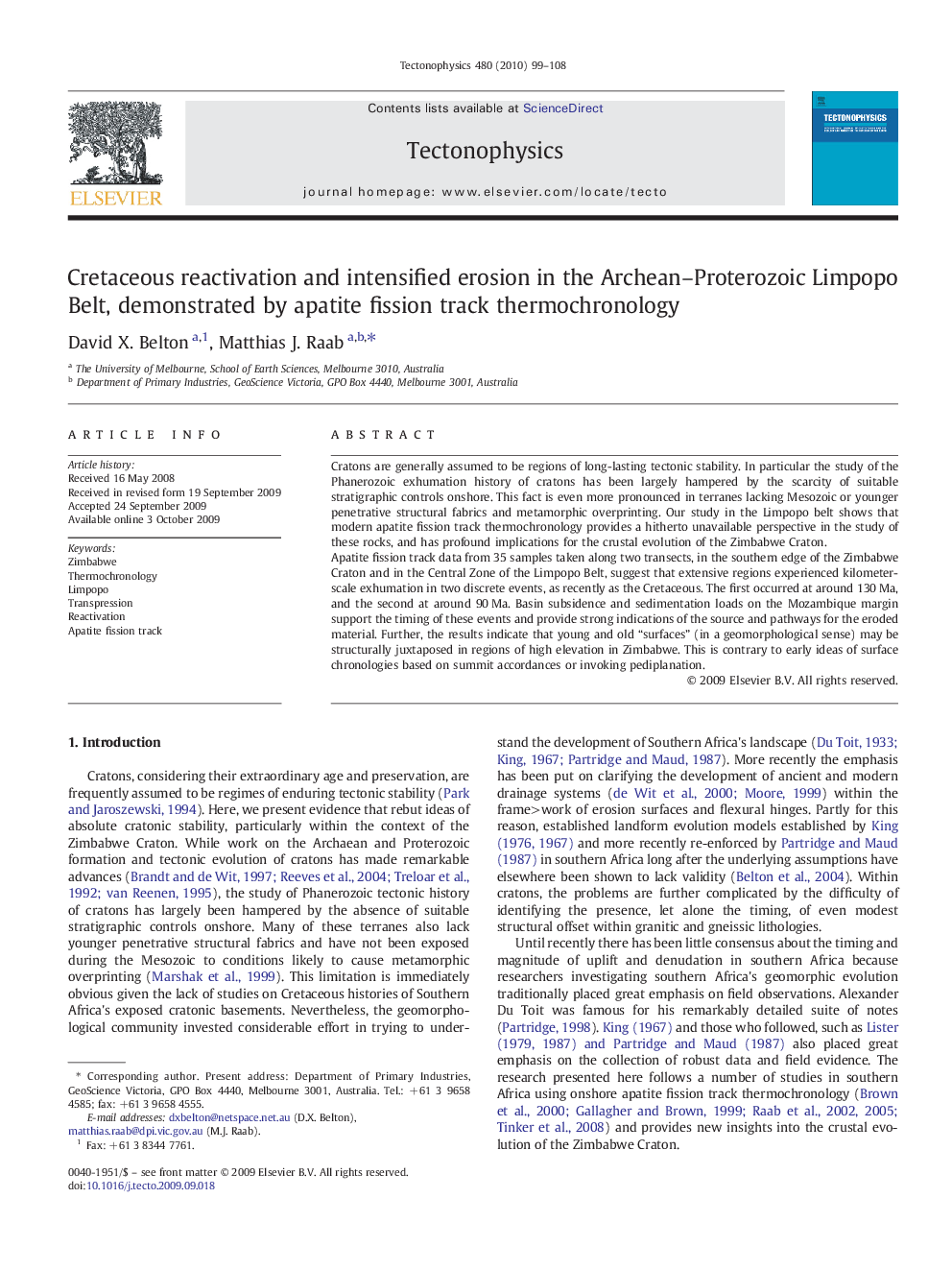| Article ID | Journal | Published Year | Pages | File Type |
|---|---|---|---|---|
| 4693673 | Tectonophysics | 2010 | 10 Pages |
Cratons are generally assumed to be regions of long-lasting tectonic stability. In particular the study of the Phanerozoic exhumation history of cratons has been largely hampered by the scarcity of suitable stratigraphic controls onshore. This fact is even more pronounced in terranes lacking Mesozoic or younger penetrative structural fabrics and metamorphic overprinting. Our study in the Limpopo belt shows that modern apatite fission track thermochronology provides a hitherto unavailable perspective in the study of these rocks, and has profound implications for the crustal evolution of the Zimbabwe Craton.Apatite fission track data from 35 samples taken along two transects, in the southern edge of the Zimbabwe Craton and in the Central Zone of the Limpopo Belt, suggest that extensive regions experienced kilometer-scale exhumation in two discrete events, as recently as the Cretaceous. The first occurred at around 130 Ma, and the second at around 90 Ma. Basin subsidence and sedimentation loads on the Mozambique margin support the timing of these events and provide strong indications of the source and pathways for the eroded material. Further, the results indicate that young and old “surfaces” (in a geomorphological sense) may be structurally juxtaposed in regions of high elevation in Zimbabwe. This is contrary to early ideas of surface chronologies based on summit accordances or invoking pediplanation.
